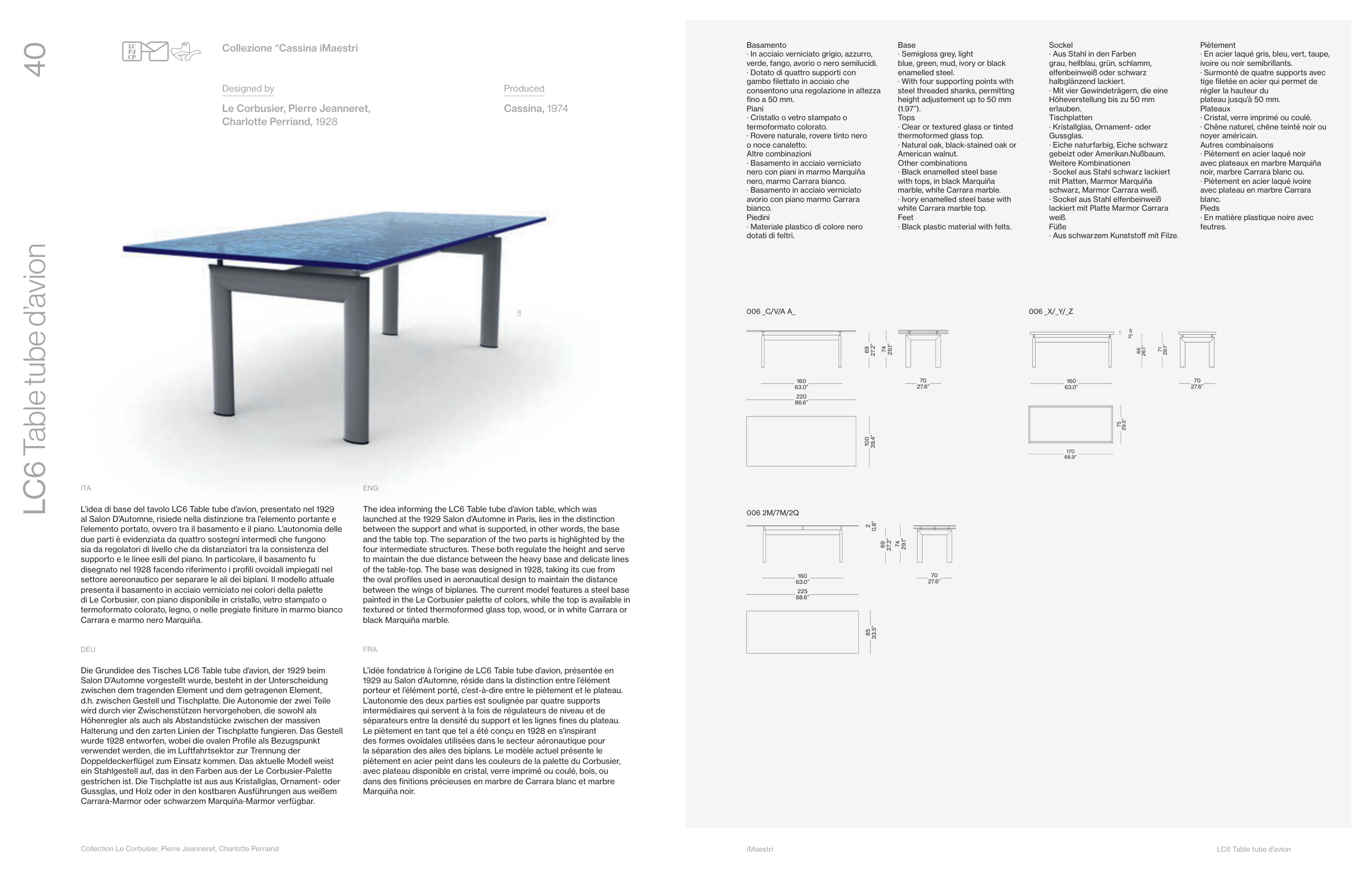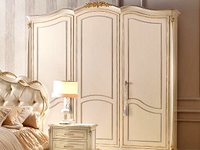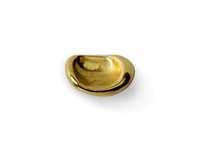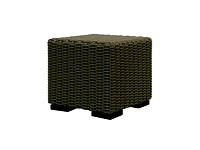L’idea di base del tavolo LC6 Table tube d’avion, presentato nel 1929
al Salon D’Automne, risiede nella distinzione tra l’elemento portante e
l’elemento portato, ovvero tra il basamento e il piano. L’autonomia delle
due parti è evidenziata da quattro sostegni intermedi che fungono
sia da regolatori di livello che da distanziatori tra la consistenza del
supporto e le linee esili del piano. In particolare, il basamento fu
disegnato nel 1928 facendo riferimento i profili ovoidali impiegati nel
settore aereonautico per separare le ali dei biplani. Il modello attuale
presenta il basamento in acciaio verniciato nei colori della palette
di Le Corbusier, con piano disponibile in cristallo, vetro stampato o
termoformato colorato, legno, o nelle pregiate finiture in marmo bianco
Carrara e marmo nero Marquiña.
The idea informing the LC6 Table tube d’avion table, which was
launched at the 1929 Salon d’Automne in Paris, lies in the distinction
between the support and what is supported, in other words, the base
and the table top. The separation of the two parts is highlighted by the
four intermediate structures. These both regulate the height and serve
to maintain the due distance between the heavy base and delicate lines
of the table-top. The base was designed in 1928, taking its cue from
the oval profiles used in aeronautical design to maintain the distance
between the wings of biplanes. The current model features a steel base
painted in the Le Corbusier palette of colors, while the top is available in
textured or tinted thermoformed glass top, wood, or in white Carrara or
black Marquiña marble.
Die Grundidee des Tisches LC6 Table tube d’avion, der 1929 beim
Salon D’Automne vorgestellt wurde, besteht in der Unterscheidung
zwischen dem tragenden Element und dem getragenen Element,
d.h. zwischen Gestell und Tischplatte. Die Autonomie der zwei Teile
wird durch vier Zwischenstützen hervorgehoben, die sowohl als
Höhenregler als auch als Abstandstücke zwischen der massiven
Halterung und den zarten Linien der Tischplatte fungieren. Das Gestell
wurde 1928 entworfen, wobei die ovalen Profile als Bezugspunkt
verwendet werden, die im Luftfahrtsektor zur Trennung der
Doppeldeckerflügel zum Einsatz kommen. Das aktuelle Modell weist
ein Stahlgestell auf, das in den Farben aus der Le Corbusier-Palette
gestrichen ist. Die Tischplatte ist aus aus Kristallglas, Ornament- oder
Gussglas, und Holz oder in den kostbaren Ausführungen aus weißem
Carrara-Marmor oder schwarzem Marquiña-Marmor verfügbar.
L’idée fondatrice à l’origine de LC6 Table tube d’avion, présentée en
1929 au Salon d’Automne, réside dans la distinction entre l’élément
porteur et l’élément porté, c’est-à-dire entre le piètement et le plateau.
L’autonomie des deux parties est soulignée par quatre supports
intermédiaires qui servent à la fois de régulateurs de niveau et de
séparateurs entre la densité du support et les lignes fines du plateau.
Le piètement en tant que tel a été conçu en 1928 en s’inspirant
des formes ovoïdales utilisées dans le secteur aéronautique pour
la séparation des ailes des biplans. Le modèle actuel présente le
piètement en acier peint dans les couleurs de la palette du Corbusier,
avec plateau disponible en cristal, verre imprimé ou coulé, bois, ou
dans des finitions précieuses en marbre de Carrara blanc et marbre
Marquiña noir.
ITA
ENG
DEU
FRA
LC6 Table tube d’avion
LC1 N° ____________
LC2 N° ____________
LC3 N° ____________
LC4 N° ____________
LC5 N° ____________
LC6 N° ____________
LC7 N° ____________
LC8 N° ____________
LC9 N° ____________
LC10–P N° ____________
LC11–P N° ____________
LC12 N° ____________
LC14 N° ____________
LC15 N° ____________
LC16 N° ____________
LC17 N° ____________
LC20 N°
____________
Designed by
Le Corbusier, Pierre Jeanneret,
Charlotte Perriand, 1928
Produced
Cassina, 1974
Basamento
· In acciaio verniciato grigio, azzurro,
verde, fango, avorio o nero semilucidi.
· Dotato di quattro supporti con
gambo filettato in acciaio che
consentono una regolazione in altezza
fino a 50 mm.
Piani
· Cristallo o vetro stampato o
termoformato colorato.
· Rovere naturale, rovere tinto nero
o noce canaletto.
Altre combinazioni
· Basamento in acciaio verniciato
nero con piani in marmo Marquiña
nero, marmo Carrara bianco.
· Basamento in acciaio verniciato
avorio con piano marmo Carrara
bianco.
Piedini
· Materiale plastico di colore nero
dotati di feltri.
Sockel
· Aus Stahl in den Farben
grau, hellblau, grün, schlamm,
elfenbeinweiß oder schwarz
halbglänzend lackiert.
· Mit vier Gewindeträgern, die eine
Höheverstellung bis zu 50 mm
erlauben.
Tischplatten
· Kristallglas, Ornament- oder
Gussglas.
· Eiche naturfarbig, Eiche schwarz
gebeizt oder Amerikan.Nußbaum.
Weitere Kombinationen
· Sockel aus Stahl schwarz lackiert
mit Platten, Marmor Marquiña
schwarz, Marmor Carrara weiß.
· Sockel aus Stahl elfenbeinweiß
lackiert mit Platte Marmor Carrara
weiß.
Füße
· Aus schwarzem Kunststoff mit Filze.
Base
· Semigloss grey, light
blue, green, mud, ivory or black
enamelled steel.
· With four supporting points with
steel threaded shanks, permitting
height adjustement up to 50 mm
(1.97”).
Tops
· Clear or textured glass or tinted
thermoformed glass top.
· Natural oak, black-stained oak or
American walnut.
Other combinations
· Black enamelled steel base
with tops, in black Marquiña
marble, white Carrara marble.
· Ivory enamelled steel base with
white Carrara marble top.
Feet
· Black plastic material with felts.
Piètement
· En acier laqué gris, bleu, vert, taupe,
ivoire ou noir semibrillants.
· Surmonté de quatre supports avec
tige filetée en acier qui permet de
régler la hauteur du
plateau jusqu’à 50 mm.
Plateaux
· Cristal, verre imprimé ou coulé.
· Chêne naturel, chêne teinté noir ou
noyer américain.
Autres combinaisons
· Piètement en acier laqué noir
avec plateaux en marbre Marquiña
noir, marbre Carrara blanc ou.
· Piètement en acier laqué ivoire
avec plateau en marbre Carrara
blanc.
Pieds
· En matière plastique noire avec
feutres.
006 _C/V/A A_
006 2M/7M/2Q
160
63.0”
225
88.6”
70
27.6”
85
33.5”
2
0.8”
69
27.2”
74
29.1”
Collezione “Cassina iMaestri
a
160
63.0”
220
86.6”
70
27.6”
100
39.4”
69
27.2”
74
29.1”
006 _X/_Y/_Z
160
63.0”
70
27.6”
66
26.1’’
71
28.1’’
5
2”
170
66.9’’
75
29.5’’
40
Collection Le Corbusier, Pierre Jeanneret, Charlotte Perriand
LC6 Table tube d’avion
iMaestri






